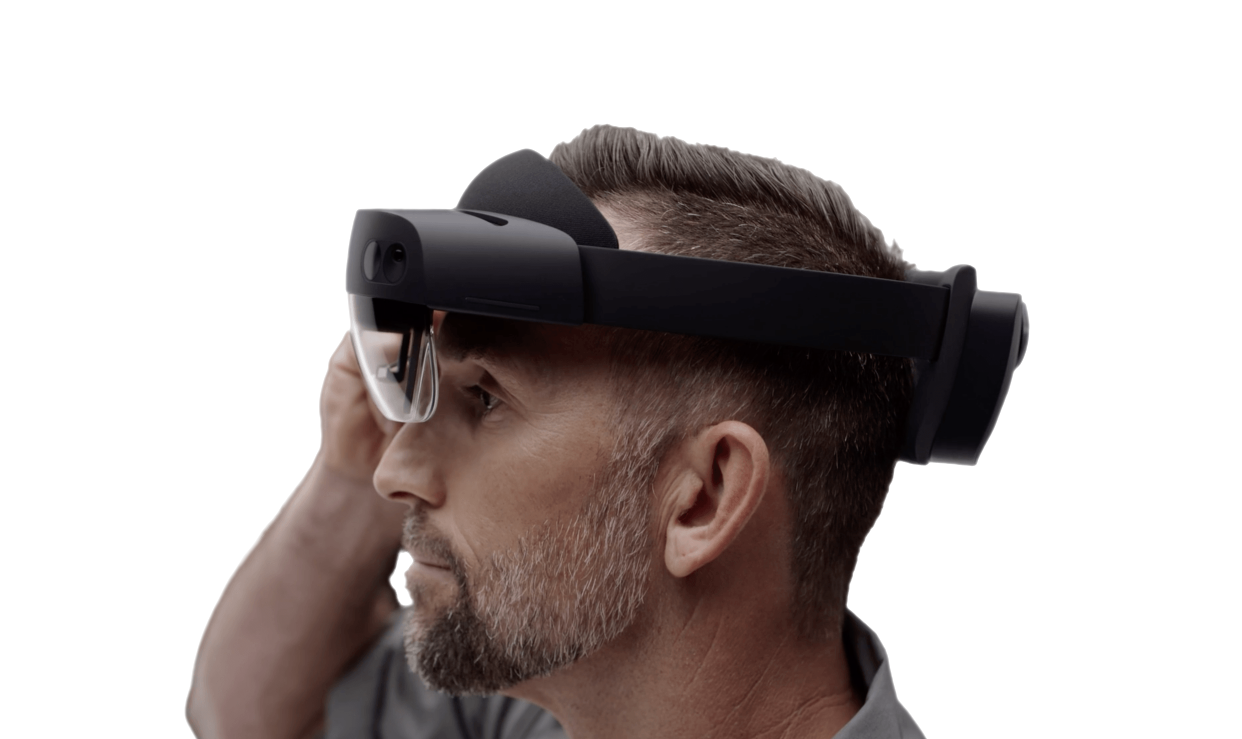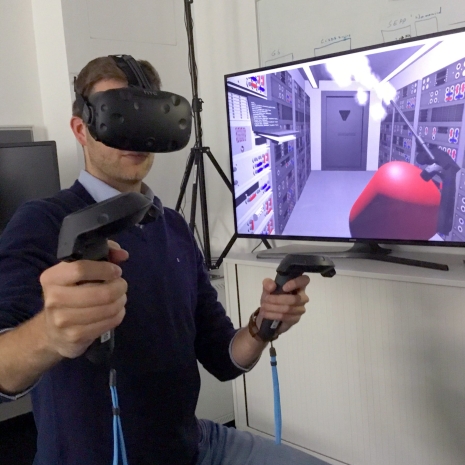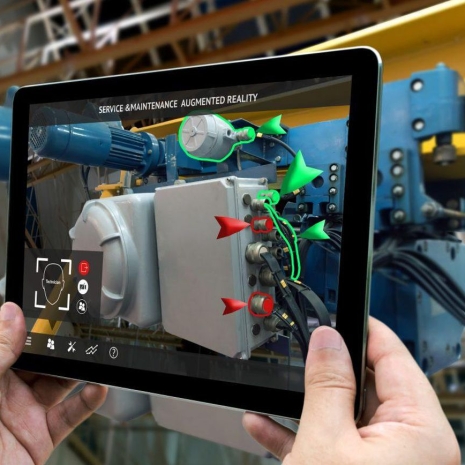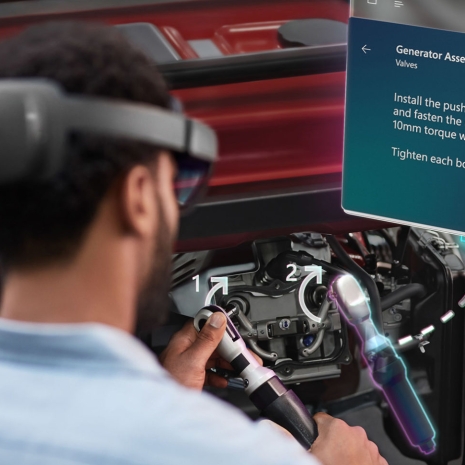Industrial Revolutions
A stroll through history

Industry 1.0
1784
Mechanization and steam engine

Industry 2.0
1870
Mass production and electricity

Industry 3.0
1969
Computer and internet

Industry 4.0
Today
Cyber-physical system
Cyber-Physical System (XR)
Integral Cognition Loop
Actively analyzing user and environment for sentient computing.
Fast Information Flow
More information bandwidth at a fraction of the time.
Multi-Sensory Input & Output
Touch, haptic, voice, sight, gesture, light and position.
Adaptive Targeted Content
Getting the right information at the right time and place.

How XR transforms businesses around the globe
Increase in Productivity
Increase in Information Retention
Increase in Task Accuracy
Reduction in Work Injuries
Reduction in Training Time
Reduction in Production Issues
- IDC, "Worldwide Spending on Augmented and Virtual Reality Forecast to Reach $17.8B in 2018, According to IDC", Nov 2017
- Boeing, "Boeing Test Augmented Reality in the Factory", Jan 2018
- Airbus, "Virtual Solutions Provide Real Benefits for Airbus’ Beluga XL Development", Feb 2016
- Ford, Ford Has Reduced the Injury Rate by 70 Percent for Its More than 50,000 Industrial Athletes in the U.S., 2015
The Faces of XR
Three realities - Infinite possibilities

Virtual Reality (VR)
Be transported to a fully immersive digital world where any kind of simulation is possible.
VR headsets completely take over your vision to give you the impression that you're somewhere else. Most modern VR headsets has six-degrees-of-freedom (6DOF) motion tracking. This means you can turn your head to see 360-degree view, as well as walk around and moving your hands freely in 3D space. So not only your vision, but most parts of your body can be transported to the virtual world.
This immersive simulation is extremely useful in training, education and visualization because the user can freely explore the environment in a repeatable, safe and detailed way. And since all movements are tracked, you can also analyze your behaviours in a granular manner.

Augmented Reality (AR)
Overlaying digital contents on top of the real world, ready for rapid mass adoption.
The most well-known AR medium is screen-based device with camera pass-through functionality - like your smartphone. Whatever the camera sees will be displayed on the screen, where it will be overlaid with digital contents. Think of it like seeing through a piece of glass with some drawings on it, adding a layer of information on top of the real world. And since most people in this era already own a smartphone, AR mass adoption is much easier.
Thanks to computer vision, typical AR devices has a capability to detect images, objects or surfaces. This allows digital contents to 'stick' to real world. This adds another benefit of using AR in almost any situation. Popular use cases are marketing, education as well as front-line workers manual companion.

Mixed Reality (MR)
Interconnected physical and digital world opening a new, better human-computer interactions.
Similar to AR, MR overlays digital contents on the real world. But thanks to its wearable nature, in MR you feel like you are seeing holograms. Furthermore, your hands are now free. MR headsets usually comes with powerful cameras and depth sensors for spatial computing. This allows MR to fully understand the environment and even try to blend with it. Other than detecting objects, it can also detect your hands so you can use gesture to control the headset.
Let's say you need to service a complicated machine. MR enables you to place a PDF manual by the table and instruction video by the wall, while holographic annotations highlighting the important parts you need to work on. With a swipe of your hand or voice command you can proceed to the next step of servicing. Spatial computing is the future of computer and smartphones.
We'd love to hear from you
Whether you have a question about our services, portfolio, speaking engagements, demo visit or anything about XR, we're all ears.

